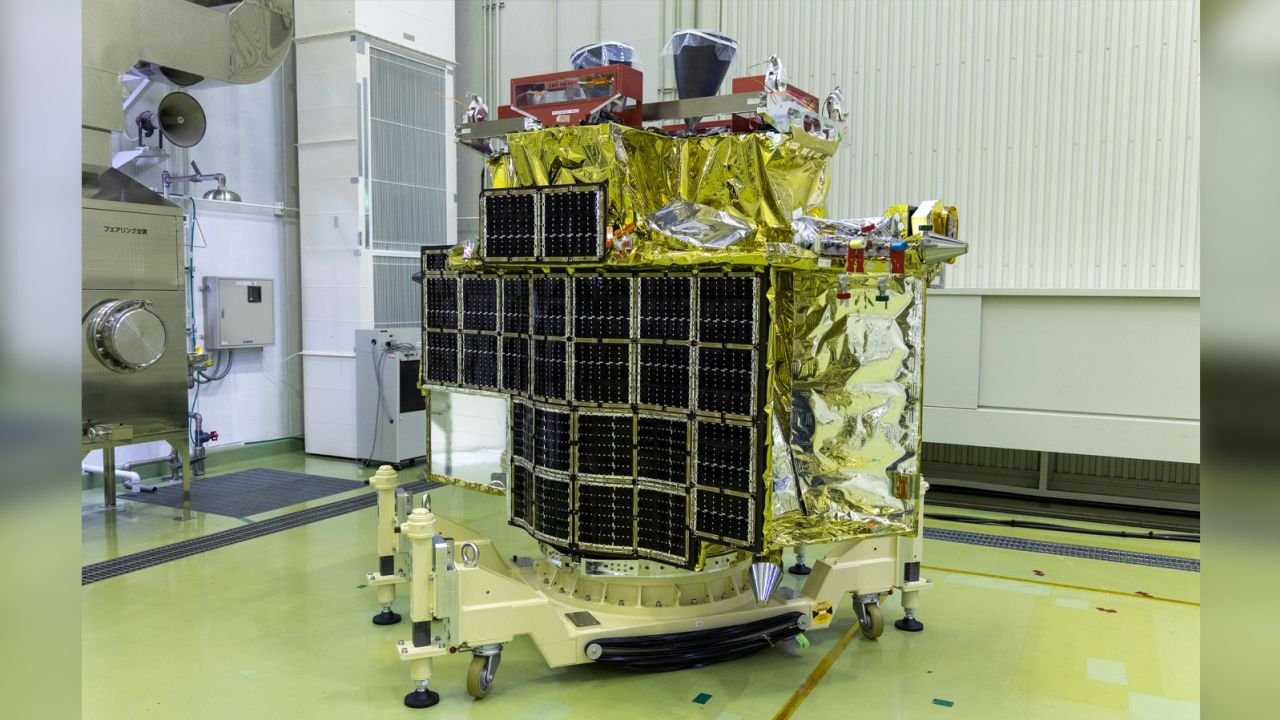“Japan Launches Revolutionary X-ray Satellite and ‘Moon Sniper’ Lander: A New Frontier in Cosmic Exploration”
In a momentous event that promises to reshape our understanding of the universe, Japan’s space agency, JAXA, launched a groundbreaking satellite and lunar lander known as XRISM and Moon Sniper. This launch, which had been delayed due to adverse weather conditions, marked a significant milestone in the world of space exploration. The XRISM satellite, short for X-Ray Imaging and Spectroscopy Mission, is a collaborative effort between JAXA, NASA, the European Space Agency, and the Canadian Space Agency. Accompanying XRISM on this extraordinary journey is JAXA’s Smart Lander for Investigating Moon, or SLIM, designed to achieve precision landings on the lunar surface. Together, these missions are poised to uncover the mysteries of the cosmos, particularly in the realm of X-ray astronomy and lunar exploration.
XRISM: Unveiling the Universe’s Secrets
The XRISM satellite represents a technological marvel in the field of space-based astronomy. This joint mission between JAXA and NASA is set to revolutionize our understanding of celestial objects by observing them in X-ray wavelengths. Unlike visible light, X-rays provide unique insights into some of the most energetic phenomena in the universe, including stellar explosions and the powerful particle jets emanating from supermassive black holes at the centers of galaxies.
The XRISM satellite is equipped with thousands of precisely curved mirrors, specially designed to capture X-rays. Its capabilities allow it to detect X-rays with energies ranging from 400 to 12,000 electron volts, far beyond the energy levels of visible light. This broad detection range opens up new possibilities for studying cosmic extremes, enabling scientists to investigate previously inaccessible realms of the universe.
Key Instruments on XRISM
XRISM is outfitted with two cutting-edge instruments, Resolve and Xtend, each serving a distinct purpose in unraveling the cosmos’ mysteries. Resolve, operating at an astonishingly frigid temperature of minus 459.58 degrees Fahrenheit (minus 273.10 degrees Celsius), tracks minute temperature shifts, enabling scientists to determine the source, composition, motion, and physical state of X-rays. This instrument promises to unveil the chemical details of the blazing hot gas within galactic clusters and provide invaluable insights into the hottest objects in the universe, such as exploding stars, black holes, and galaxies powered by them.
Meanwhile, Xtend boasts one of the largest fields of view among X-ray satellites, promising to deliver highly detailed spectra that will shed light on the internal structures of neutron stars and the near-light-speed particle jets generated by black holes in active galaxies. Together, these instruments will help scientists explore the most enigmatic corners of our universe, uncovering unexpected phenomena and expanding our knowledge of the cosmos.
Moon Sniper: A Precision Lunar Landing
Accompanying XRISM on its cosmic journey is JAXA’s Smart Lander for Investigating Moon, aptly nicknamed Moon Sniper. This innovative lunar lander is designed to achieve pinpoint landings with unprecedented precision, landing within a specific location just 100 meters (328 feet) from the target, a significant improvement over the typical kilometer range.
Moon Sniper’s primary objective is to demonstrate its precision landing capabilities. Its advanced technology relies on high-precision landing systems, making it uniquely suited to its mission. The precision of its landings has earned it the moniker “Moon Sniper,” reflecting its ability to strike a specific target with unparalleled accuracy.
Exploring the Lunar Surface
Upon reaching lunar orbit, Moon Sniper is slated to orbit the moon for approximately one month before initiating its descent. Landing is expected to occur within four to six months after launch, with the spacecraft targeting a site near the small lunar impact crater known as Shioli, located in the vicinity of the Sea of Nectar. This region holds the promise of uncovering valuable insights into lunar composition, potentially shedding light on the moon’s origins and evolution.
Moon Sniper’s mission distinguishes itself from recent lunar lander missions that have primarily aimed for the lunar south pole. This new approach presents a fresh perspective, allowing scientists to investigate lunar features in different geographical locations. The chosen landing site is just south of the iconic Sea of Tranquility, famously visited by NASA’s Apollo 11 mission in 1969.
A New Era of Lunar Exploration
In a broader context, Moon Sniper’s mission aligns with global efforts to explore and exploit the moon’s resources. As one of the world’s few countries to execute a controlled lunar landing, Japan is at the forefront of lunar exploration, joining the ranks of the United States, the former Soviet Union, China, and India. Recent missions to the lunar south pole have revealed the presence of water ice in permanently shadowed regions, further emphasizing the importance of precision landing technology in navigating lunar hazards.
Moon Sniper’s lightweight design holds promise for future lunar and planetary missions, including potential missions to Mars and other celestial bodies. If Moon Sniper achieves its mission objectives, it could transform the way we approach lunar exploration, allowing for more frequent and precise landings on the moon, ultimately expanding our understanding of our celestial neighbor.
The launch of the XRISM satellite and Moon Sniper lunar lander represents a pivotal moment in the history of space exploration. These missions, with their cutting-edge technology and precision capabilities, hold the potential to unlock profound insights into the universe’s most enigmatic phenomena. XRISM’s exploration of X-ray emissions from celestial objects and Moon Sniper’s quest to achieve pinpoint lunar landings mark significant strides in our quest to comprehend the cosmos and the celestial bodies within it. As these missions unfold and deliver groundbreaking data, the scientific community eagerly anticipates the unexpected discoveries that lie ahead, ushering in a new era of cosmic exploration.




